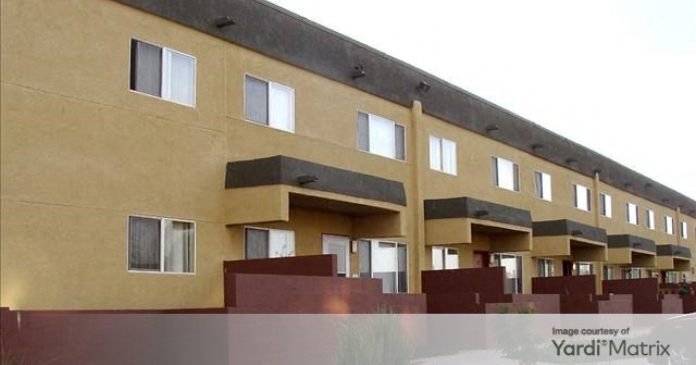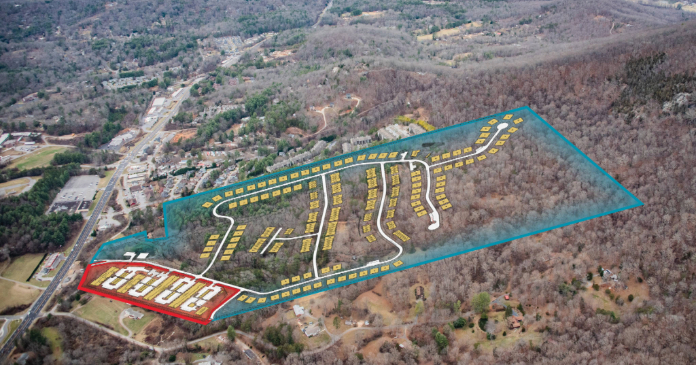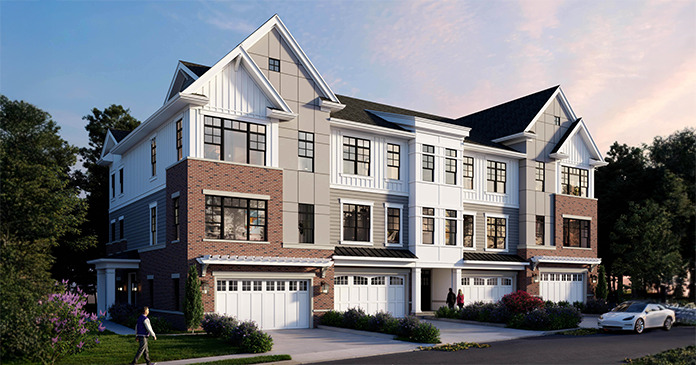Yield PRO TV presents NAHB Power Hitters. Host Linda Hoffman talks with Ziv Cohen, Chief Investment Officer of The Resmark Companies.
Transcript: NAHB Power Hitters interview. Linda Hoffman with Ziv Cohen, recorded June 17, 2021
(music)
Linda Hoffman: Buy land wrote the great writer, Mark Twain. They’re not making anymore and it.
There’s something intoxicating about commercial real estate. Sure. Single family is cool. You build ‘em, sell ‘em, and move on to the next parcel… kinda like a cowboy.
Multifamily. That’s another story. With multifamily you stay and make friends.
Still, those in the business know that the real magic happens years—sometimes decades–before the move-in. And today that’s essentially what it takes–magic. We’ve moved from, “hey brother can you spare some lumber,” to “hey brother can you spare some land?”
Publicly held builders account for 47 percent of raw land transactions—up 8 points year over year according one study. Many smaller volume builders are self-developing in order to hold their margins.
And apartment development is a pipeline business. The land bought—or not bought—today will manifest—or not—years down the road. Today’s construction is yesterday’s land deal and improvements project.
Today we speak with someone who has given a lot of thought to land prices and margins. Ziv Cohen of Resmark based in Los Angeles, California. While creativity is central to a savvy developer, Ziv may be at the top of his game. Resmark is a top real estate investment manager with a fine-tuned residential development strategy. Under Ziv’s direction Resmark has curated partnerships with the nation’s best-in-class developers and the largest public pension funds, arranging for the right capital to find the right deal.
Ziv, you are what we in the industry call a rainmaker. Welcome to the show.
Ziv Cohen: Hi Linda. Pleasure being with you here. Thank you for those really, really kind words that you are starting with.
Linda Hoffman: Well, let’s start with an overview. Resmark Companies: what’s the heart of your business and where do you operate?
Ziv Cohen: So, we are in our 26th year in business and what we do is we provide equity capital to homebuilders, land developers, multifamily developers, single-family built-to-rent developers, and our most recent product, which is the model home sale-lease-back program, in which we buy models from builders and lease it back to them for their sales and marketing operations.
We operate in many regional markets in the U.S. from the West Coast through the desert and mountain regions, Texas, the mid-Atlantic region and select markets in the southeast. So, in many, many ways we have a national platform that is focused regionally.
Linda Hoffman: Resmark concentrates on the urban core and suburban urban plays. How’s that worked during the pandemic?
Ziv Cohen: So, that’s actually a pretty interesting viewpoint from our perspective. Maybe defining what an urban core adjacent market is; so, when we look at the urban core adjacent markets we look at markets that are easily accessible to the central business district within the urban market. You have either walkable or bicycle-based commute or really easy public transportation into your employment within less than 30 minutes basically 15 to 30 minutes accessibility to your job.
However, when we look at the urban core itself, the urban core itself has a tendency to be more, if you will. It has an ocean of concrete, an ocean of steel and glass. We tend to focus, when we go that direction, we tend to focus on the more organic neighborhoods that have, you know, organic settings like local bars and restaurants, local grocery stores, a residential setting, less density.
We’re not talking about single-family homes. We’re talking about the densities that are in the 50 to 75 dwelling units, a reverse of the urban core, which is substantially more dense. There’s something about those neighborhoods… The millennials, which have been are our main target audience really gravitates towards. There’s an interesting reality there of being part of something that is not just corporate. And we see that pretty significantly throughout our community.
That the market actually thrived in the epidemic. We did not see a significant exit out of those markets, even though the rental decreases that we saw in the core add impact on our rental rate. But it wasn’t as detrimental as that what we saw in the urban core.
With respect to suburban urban locations, which is again, by definition, the first ring of suburban markets that are commutable into the urban core, into the employment center, either via mass transit or by car with very accessible freeway system. And in those markets, actually, we’ve seen an uptick in rental activity and an uptick in rents and occupancies. Because those markets benefited from people exiting the urban core and trying to find a little bit more space, trying to find a little less density and an ability to basically stretch their legs out, I guess. And figure out where their normal environments are going to be.
So this actually… it’s not a tale of two towns, but it’s really for us—the focus on organic neighborhood has been a good protector for us during COVID. And our tendency to move into the first ring of suburban markets has actually paid off during the pandemic.
Linda Hoffman: Well. your pre-pandemic strategy, Ziv, sounds like a good post-pandemic strategy. Has there been more competition for deals in these regions since COVID?
Ziv Cohen: Yes. Absolutely I think that if you look at the development world, if you look at where capital is trying to be placed, you definitely see a significant entry of new players into the suburban markets—players that 10, I guess 15 to 10 years ago, were pretty much averse to moving into the suburban markets. They were really wanting to play in urban core markets where they felt that the in-migration of millennials from the suburbs, as they grew up and became renters, was significant and the suburban markets were lacking.
We tracked that demographic and we tracked that empirically, and I can tell you that since 2015 there has been an outperformance of suburban markets or other markets. And when I say suburban markets, I actually talk about suburban markets and urban core adjacents. Urban core adjacent market is really more of a Resmark definition. It’s really hard to measure, right, an urban core adjacent market, you basically glue it in the suburban definition, or you can glue it in on the sidelines of the urban definition. So, it’s kind of a hybrid product that not many people are tracking as a product type or a demanded product in the market. I think we took pretty good advantage of it from 2010 until today.
Linda Hoffman: as you mentioned at the top of the show, Resmark is active in built-for-sale single-family homes, built-for-rent single-family homes and multifamily homes. How does investor interest and opportunities in these three markets compare?
Ziv Cohen: You know, Linda, that’s really interesting. I think I’ll start with the obvious. Single-family rentals are the hottest topic in the investment world today. There are a variety of ways in which you can participate in that business. You can buy finished product that is old. You can buy finished product that is basically new. In buying phases of development, not the entire development, but phases of development from builders. You can buy purpose-built single-family communities that are executed as a community. And then you can develop the product.
There is tremendous demand for a product and capital. However, I would tell you that the lion’s share of the capital that is lining up is lining up to buy finished product. That’s where the biggest, I guess concentration a book of capital is lining up.
We believe at Resmark that this is a great opportunity to actually deliver the product to where the largest demand is, right? It gives you visibility towards a very likely exit. So, we will build it, we will stabilize it, and then we will sell it into that wall of capital that is desiring to buy the product.
We think that’s a great opportunity. Now when I say will build it, there’s two ways in which we can do it. We can joint venture it with builder partners, either on the for sale, the builder’s side, the home building side of the equation, or multifamily developers. Both groups of developers are trying to basically enter this new arena and dominate it.
But the homebuilders are trying to say this is my product, you’re building single-family. The apartment developers are saying, yes, we’re building single-family but we’re operating this—these are tenants, these are not homebuyers. So, there’s a little bit of a power struggling. I think from our perspective, it’s very unique. We’re sitting right in the middle. We are providing capital to homebuilders. We’re providing capital to apartment developers. I think we’re very uniquely positioned in that business.
And we can do that on our own as owners by hiring RE builders and GCs. We feel that there’s a lot of demand in that business on the capital side and we think that we can actually produce great product that’s going to be highly demanded into the future.
On the single-family side, as you said, publicly traded builders are dominating the markets. And that’s a trend that has intensified since the late 80s and early 90s. Publicly traded builders in key markets are dominating 50 to 60 percent of market share within those markets. Private builders are being squeezed and basically what used to be a very entrepreneurial, as you said, potentially cowboy-like business. It is becoming less and less common in those big institutions with policies, procedures, and different looks, of how to operate are entering that market and changing it.
Investors on the other side are extremely interested to play in the for-sale business, but either institutional investors or private investors are actually playing in the land side of that equation. The production side is being more left to the professionals, the public builders, the large privates and that’s becoming more and more of a true manufacturing business.
On land side, it’s a more creative, more dynamic—you have a political process, you have to entitle land, you have to prove it and take it through design. It’s a much more creative process. And capital is trying to enter into that market, provide capital and then sell finished land product for the builders to basically build their houses on completed lots. And, on that side, there is significant demand from investors to enter the land business. And that combination of big public builders trying to buy finished lots and large investors coming in and buying land and entitling it or developing and selling it to homebuilders is part of the reasons why land prices, like you said, continue to rise up to a pretty healthy position today. And potentially, if continuing at this pace, probably unhealthy levels.
With respect to multifamily development, we saw that investor demand dried up in early COVID. And that was actually a logical. In the major core markets there was an overhang of supply, both units that were being completed and brought into the market at the wrong time, as well as, you know, pipelines.
As we look at that market, I think again talking with empirical evidence since around February, absorption of rental units had increased dramatically nationwide and in key markets. And we continue to see that trend intensifying.
Since February we actually have seen the return of equity capital into the market. It started with the debt capital coming in more—a little bit more aggressively with higher rates of, higher, I guess proceeds moving it from 50 percent loan-to-cost, to 60 percent loan-to-cost debt equity came in somewhere around February March. And we’re seeing an intensifying element there.
CAP rates actually have compressed, which is if you look at it on its face, how can CAP rates go further lower than they are. And they actually did. So we think it from investor perspective multifamily demand is intensifying. But if I had to rank between the three areas that we operated in, I would say that single-family rental is the, I guess, darling right now of capital followed by buying land for the for-sale business. Third by the investment in multifamily development. Which I actually like because it allows me to select from the very best deals because there’s still a lot of choice in the multifamily site.
It allows me to select the very best deals from my very best partners.
Linda Hoffman: Ziv, that makes sense because there’s this twilight market of buyers and no product.
Ziv Cohen: Yes, absolutely. And we actually, we have a property on the market today in San Diego and the early indications—demand for that product is a significant sweep up. It actually surprised us how significant, the tour count, the confidentiality agreement count has been so far.
Linda Hoffman: That’s fantastic. Well, the one thing that the overarching piece to all of this is ESG—environmental, social and governance. It’s been elevated in recent days with mega investors like Blackrock. Has ESG altered your mode of operation in anyway?
Ziv Cohen: So we had actually started looking at ESG about 10 years ago as a company. And given the fact that we serve massive institutional investors I think they tend to be trailblazers in the field. So from their perspective, they’re looking at policies and procedures. They’re looking at their go-forward initiatives with respect to ESG. And would like their managers to have number one: input into what those, you know, goals and objectives should be. And number two, have some form of a manual, some form of policies and procedures within the manager’s jurisdiction, if you will, in order to execute the ESG strategies.
So we have been noticing an increasing interest from the investor community with respect to ESG. I can’t tell you that we have seen a significant demand or authoritarian command to say you have to do XYZ. But we definitely see that there is a trend and you don’t want to turn a blind eye to a trend that is happening all around you. You just don’t want to wake up one day and you’re behind the curve on something that is really, really important to your investors.
Our business as fiduciaries to institutional capital is to basically, not just serve them and put their interests first, but always anticipate what’s going to be their next desired direction. And maybe be there a step ahead versus, you know, two steps behind. As an advisor that’s something that you should always pay attention to and be very much attuned to as a company.
So, at Resmark, we have ESG policies. The E is probably the easiest to implement so on our existing assets we have pretty clear strategies with respect to recycling, with respect to the usage of water, with respect to reclaimed water when available, with respect to how we heat the common areas, with respect to the type of lighting that we use as we replace lighting packages within existing assets. That’s a very easy, measurable element for us, indeed.
With respect to development, we are looking at municipal code in California. California Green is actually a pretty close standard to LEED, to residential LEED. So, by code, you’re almost there. So, where we can make that extra step into residential LEED, we do.
In other markets we really track what is governmentally applicable. And always pay attention to the economic trade-off of creating more value, not just for our investors, but more value for the community. And in areas where that value to community is evident, those are the areas where it’s the easiest decision to make, right? It’s basically there for the community and it’s there for the investor. It makes a lot of sense.
There are, unfortunately, certain elements in certain locations in which there is a misalignment between the value to the consumer and the ability to produce an environmentally sensitive product. So, we pay a lot of attention to that and we consider alternatives in which we can maximize environmental sensitivity, while not compromising economic returns. And I think that that’s an ongoing struggle, especially as a capital provider, where projects are being, sometimes, produced in and introduced to us when they’re in finished form, then basically ready to go.
So, it’s a constant balancing act and something that we pay close attention to.
Linda Hoffman: That’s a really good point. How much of a hit to you are ESG-focused investors winning to accept?
Ziv Cohen: Well Linda, this is actually an interesting question. It’s at the heart of the issue. I think that when I think about it—it’s almost paraphrasing on Jim Collins,’ Built to Last, when he was talking about the “genius of the AND and the tyranny of the OR.” And I think investors, at this point, are taking the concept of the genius of the AND, and we are kind of worried about the tyranny of the OR. With respect to the genius of the AND, we, the investors are seeking a combination of both getting environmentally sensitive projects and buildings and investments—and expecting, at the same time, that that’s going to be achieved at the exact same returns that a project that did not comply, generates.
From our perspective, we believe that there is a current cost—maybe in the future that cost gets, that cost turns into value. But where we sit here today, that is really a cost of doing business. And I’m not sure that investors are willing to, at this point, except the reduction in return that corresponds that investment.
And I think that that is a critical gateway issue to monetizing ESG, especially E with respect to that topic.
Linda Hoffman: Certainly, that’s becoming more and more developed with things like utility management where it has proven a discernible return, and the market will mature to that point.
Ziv Cohen: Yes. There are definitely topics that are proven with respect to that. I think that when we provide energy efficient appliances, our tenants are willing to pay us more for them and we can basically generate value out of it. Air-conditioning units that are specific to a specific room. Much more environmentally sensitive, much more environmentally friendly and generates better utility bills for our tenants. They are therefore willing to pay us more in rent and in return, when we sell the property investors are willing to pay us more because our NOI is better.
So there are those trade-offs but in the aggregate, right, you have to look at the infrastructure of environmentally friendly policies and be willing to accept less returns.
Linda Hoffman: Housing sets the pace for every other sector and it’s great to get an insiders take when we were heading that’s a wrap for today show it’s been fascinating leave thank you for sharing your great insights on the market.
Ziv Cohen: Thank you Linda. I appreciate it and again thank you for having me.
Linda Hoffman: Housing is the great echo. What we hear today, we feel tomorrow. Land. Lumber. Legislature. Today’s stories create tomorrow’s housing markets.
We rely on folks—the brightest minds like Ziv to ink the deals that create the housing for tomorrow’s economy. To find their way over the hurdles of supply and demand, regulations, inflation and come what may to find and make those deals that provide tomorrow’s housing for tomorrow’s residents.
Thank you for joining us today. I hope you enjoyed our show. Look for our next exciting episode of NAHB power hitters.
(music)












